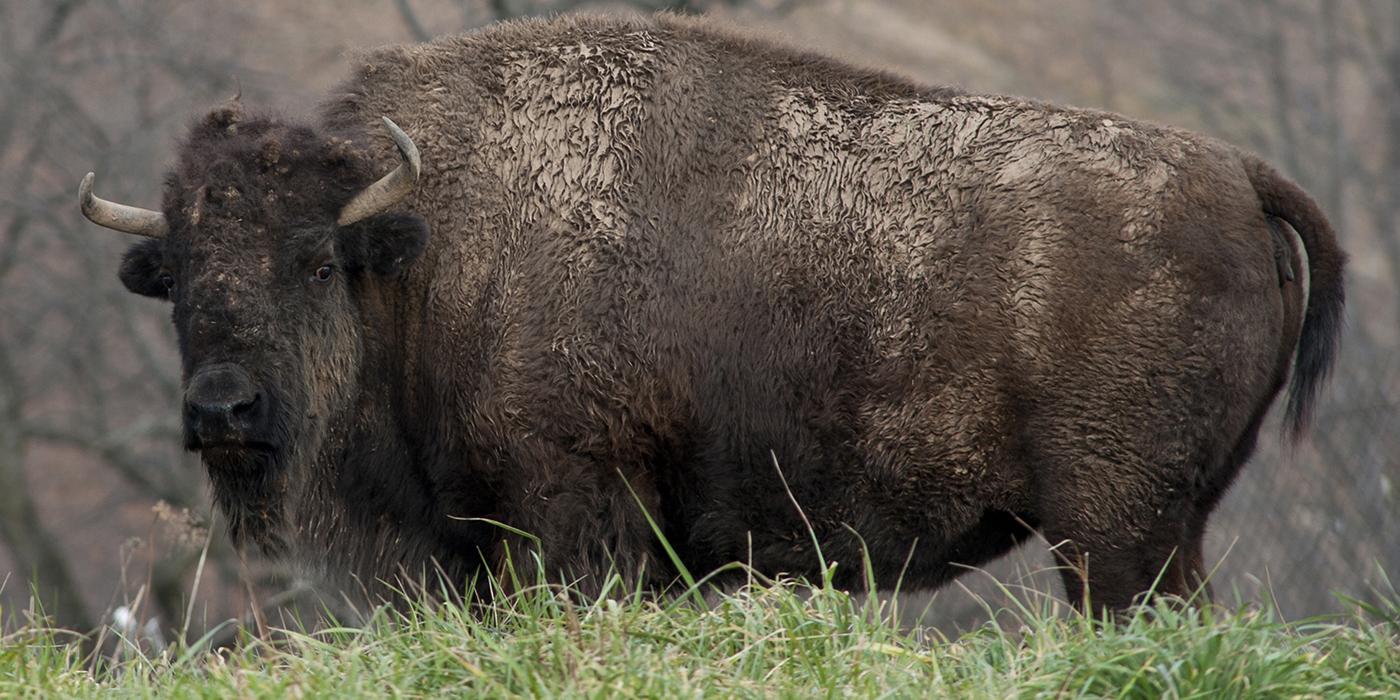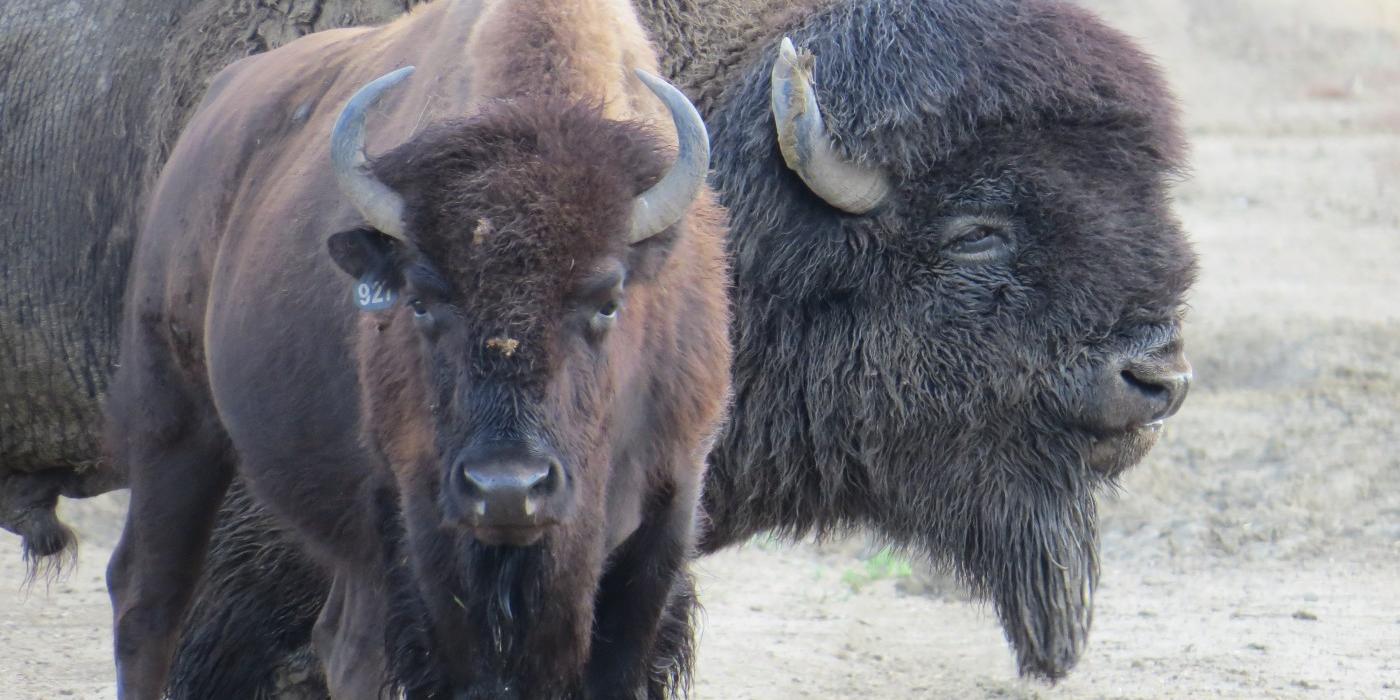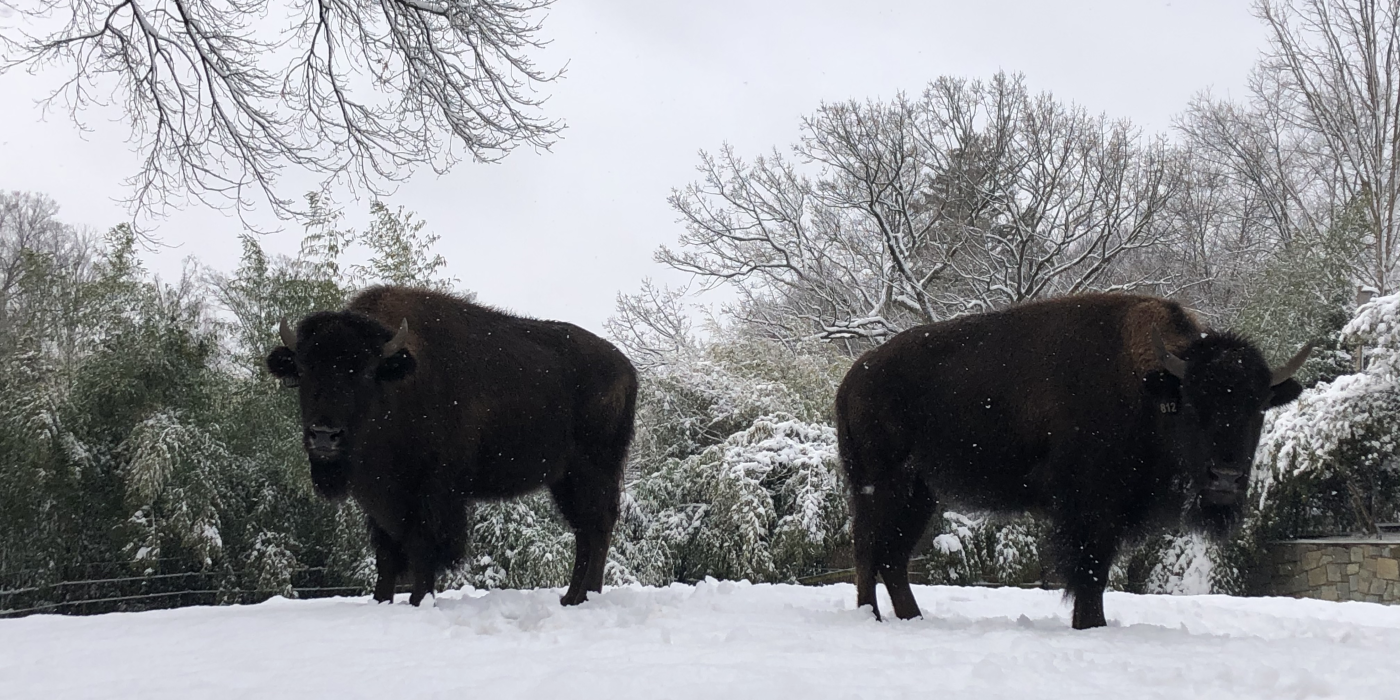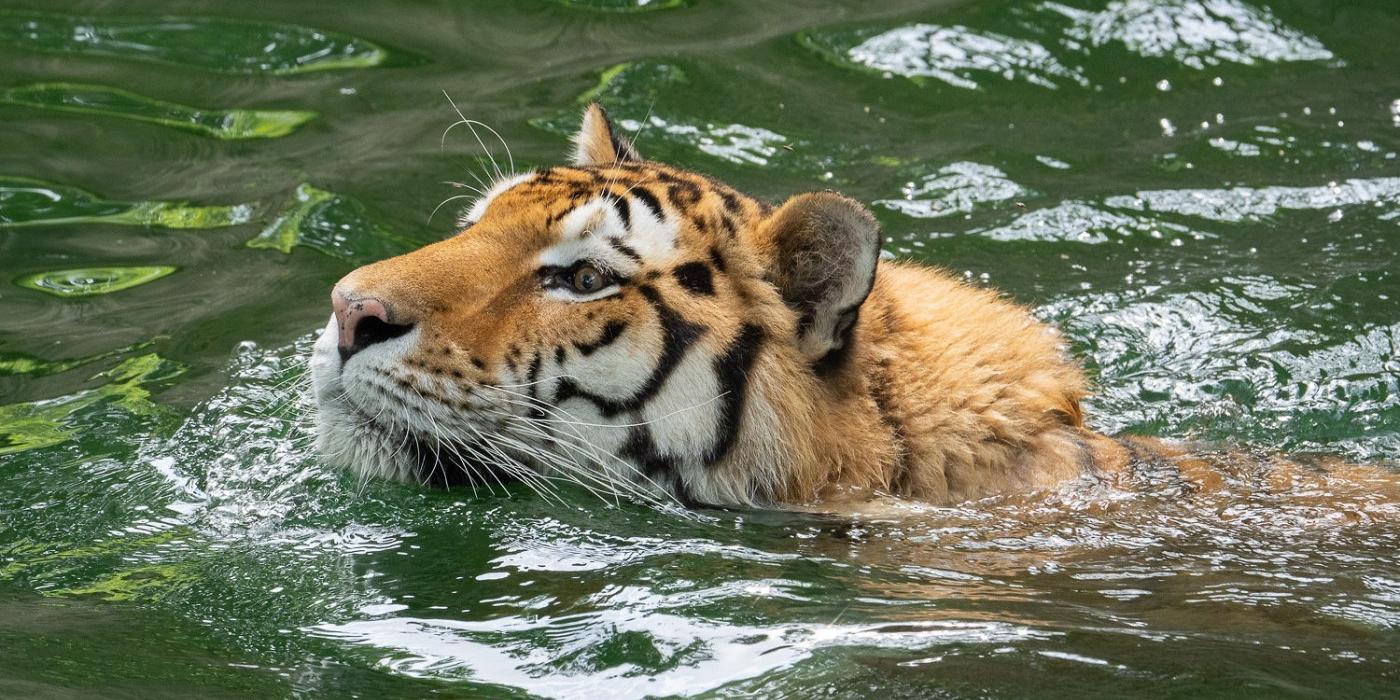It's Bison, Not Buffalo. And Other American Bison Facts
The iconic song of the American West, “Home on the Range,” got a key detail wrong — buffalo never roamed the region! But bison still do. Isn’t it time you learned why?
Are bison and buffalo the same?
Though the terms are often used interchangeably, buffalo and bison are distinct animals. Old World “true” buffalo (Cape buffalo and water buffalo) are native to Africa and Asia. Bison are found in North America and Europe.
Both bison and buffalo are in the bovidae family, but the two are not closely related.
How did the names get so mixed up? Historians believe that early European explorers are to blame, though the details are a bit murky. According to the National Park Service, it’s possible it stemmed from the French word boeuf, meaning beef. Others posit that bison hides resembled buff coats commonly worn by military men at the time, inspiring the name. Whatever the case, the misnomer stuck.
So how do you tell the difference between buffalo and bison?
Bison have large humps at their shoulders and bigger heads than buffalo. They also have beards, as well as thick coats which they shed in the spring and early summer.
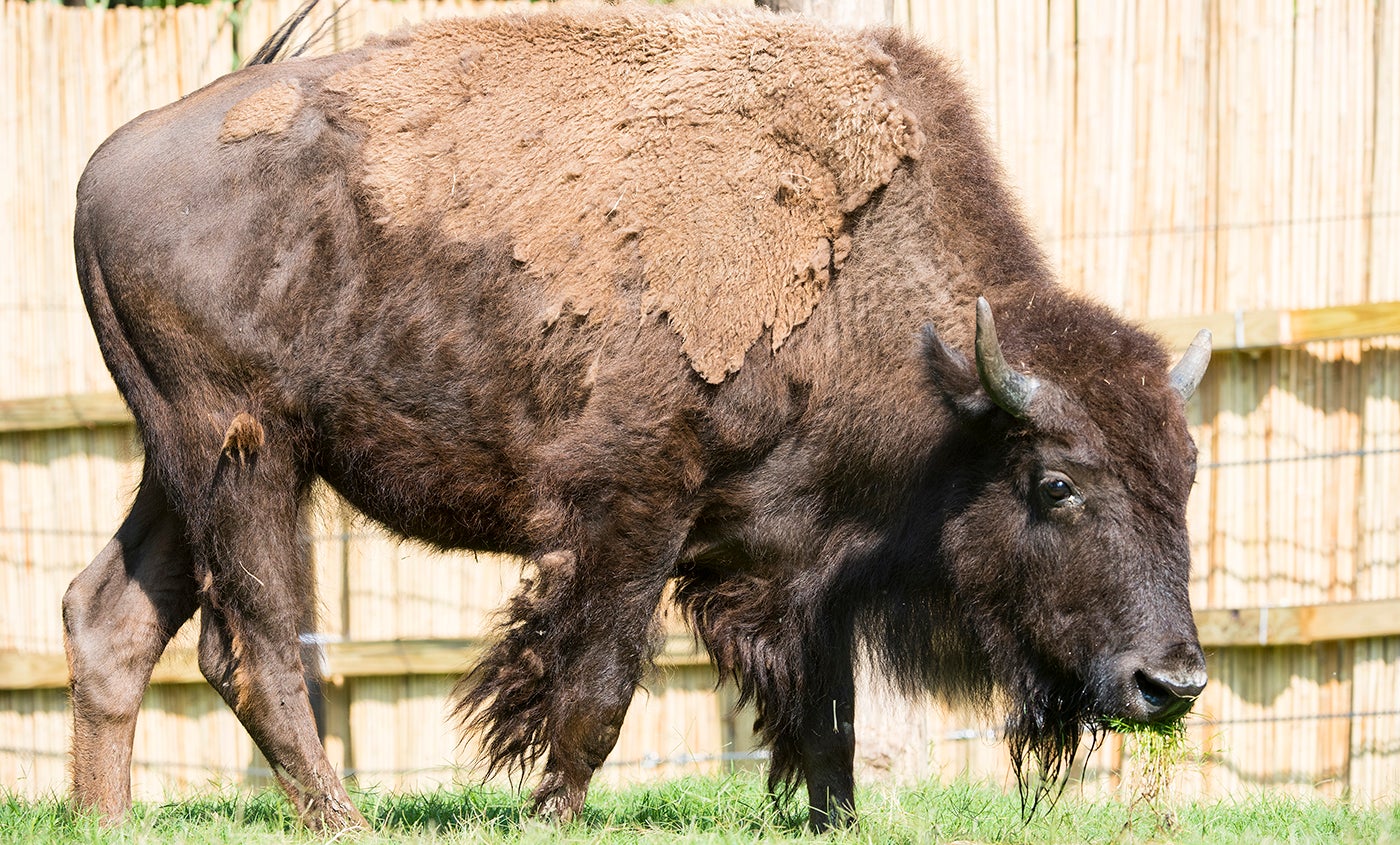
Another simple way to tell a buffalo from a bison is to look at its horns. Cape buffalo horns resemble a handlebar mustache; they have a thick, helmet-like base and curl down, then back up.
A water buffalo’s horns are large, long and curved in a crescent, while a bison’s horns are typically sharp and shorter than the average buffalo’s.
What do bison eat?
These year-round grazers primarily eat grasses but also consume flowering plants, lichen and woody plant leaves. In winter, bison sweep their large heads from side to side like a plow to clear away snow to find food.
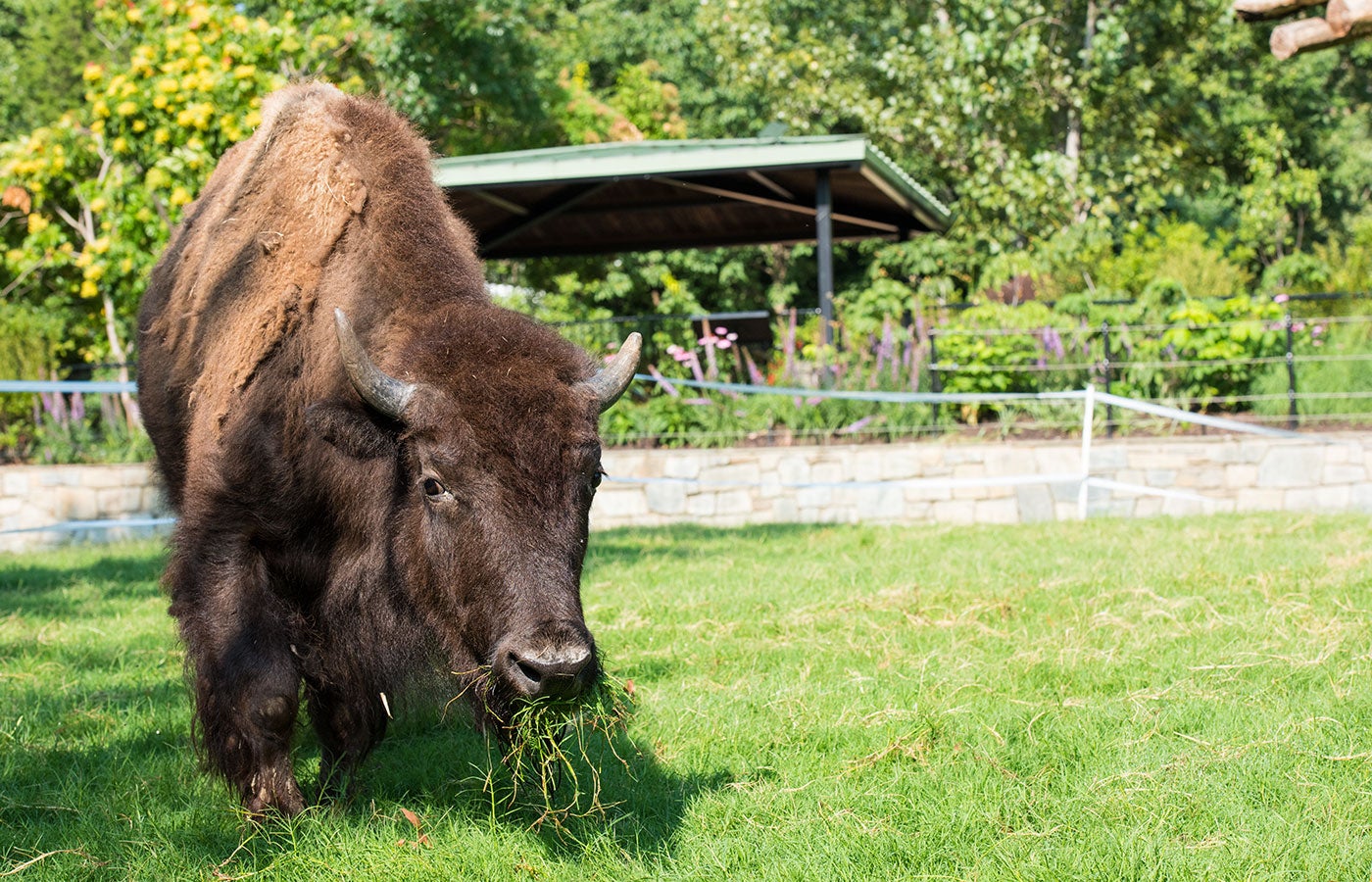
Are bison (not buffalo) endangered?
It’s estimated that 30 to 100 million bison roamed the Great Plains before 1800. But by the 1980s, fewer than 1,000 remained. Many were slaughtered by the U.S. government in an organized effort to destroy the livelihood of Plains Indians.
Though the American bison population has since recovered, the species is still considered near threatened, and these animals depend heavily on conservation efforts for survival.
How many bison are left?
Today, about 30,000 American bison survive in conservation herds. Another approximately 500,000 individuals are managed commercially as livestock.
Do bison moo?
They don’t moo, but they do grunt, snort and bellow!
Are bison dangerous or aggressive?
Bison are tough, confident animals that will often react aggressively when they sense danger. Many human activities can seem threatening to bison, so it’s always important to keep plenty of distance.
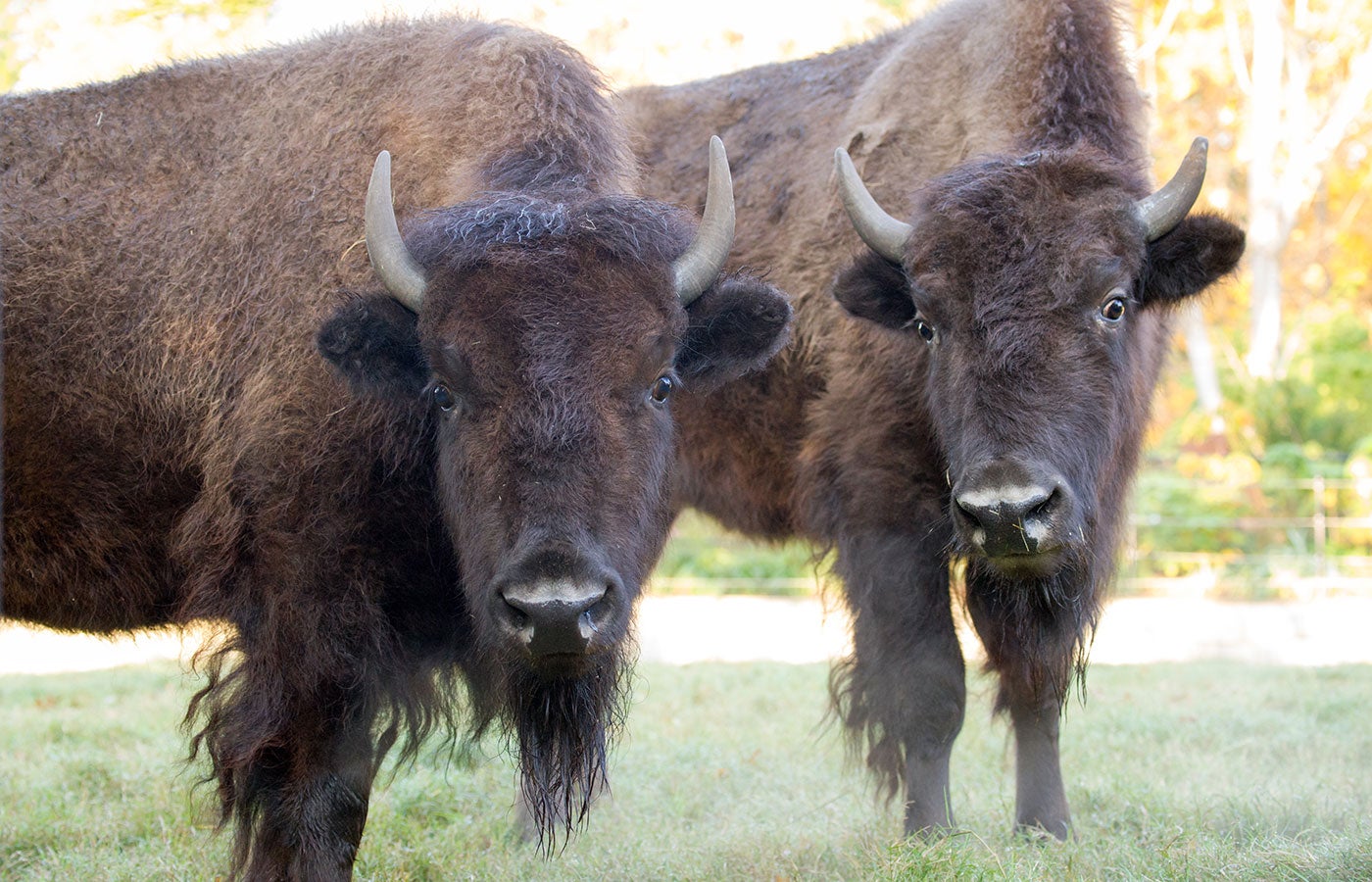
Bison have excellent senses of hearing and smell, but they can’t see very well. Because of their poor eyesight, an entire herd can stampede if startled.
Did you know? Bison can run up to 30 mph!
Males display their fitness by charging and butting heads with other bulls, but they rarely fight to the death.
Where do American bison live?
Bison were once found from Alaska to northern Mexico, primarily in the grasslands and prairies of North America. Today, they occupy only about 1 percent of their former range.
Herds can be found in parts of Alberta, British Columbia, Manitoba, Northwest Territories, Ontario and Saskatchewan in Canada, as well as Arizona, California, Idaho, Montana, South Dakota, Utah, Wyoming, Alaska and possibly Texas in the U.S. These modern herds are very fragmented, and their distribution is limited.
And finally, is “Buffalo buffalo Buffalo buffalo buffalo buffalo Buffalo buffalo” really a grammatically correct sentence?
Yes! Although, the same can’t be said for “Bison bison bison bison bison bison bison bison.” Still don’t believe it? Let the creator of this mind-boggler help clear things up.
Stop by the American bison exhibit to meet Lucy and Gally during your next visit to the Smithsonian’s National Zoo.
Related Species:

